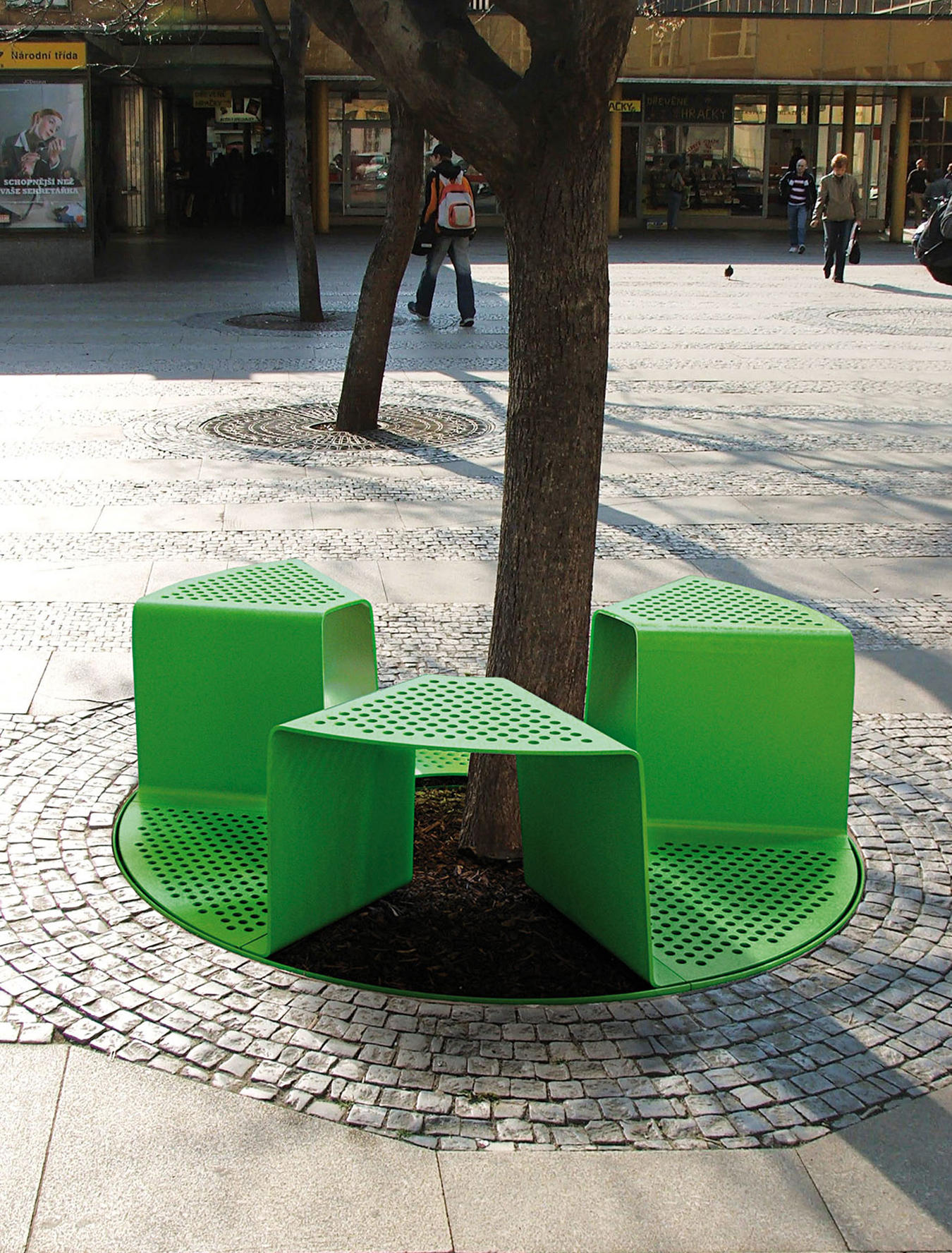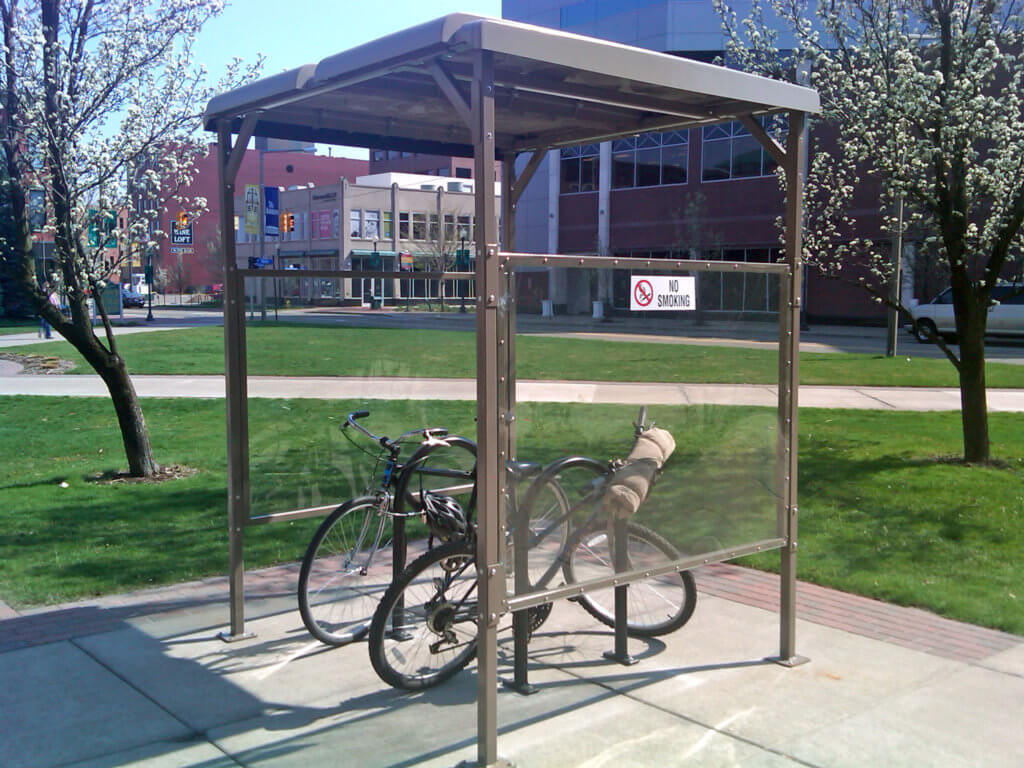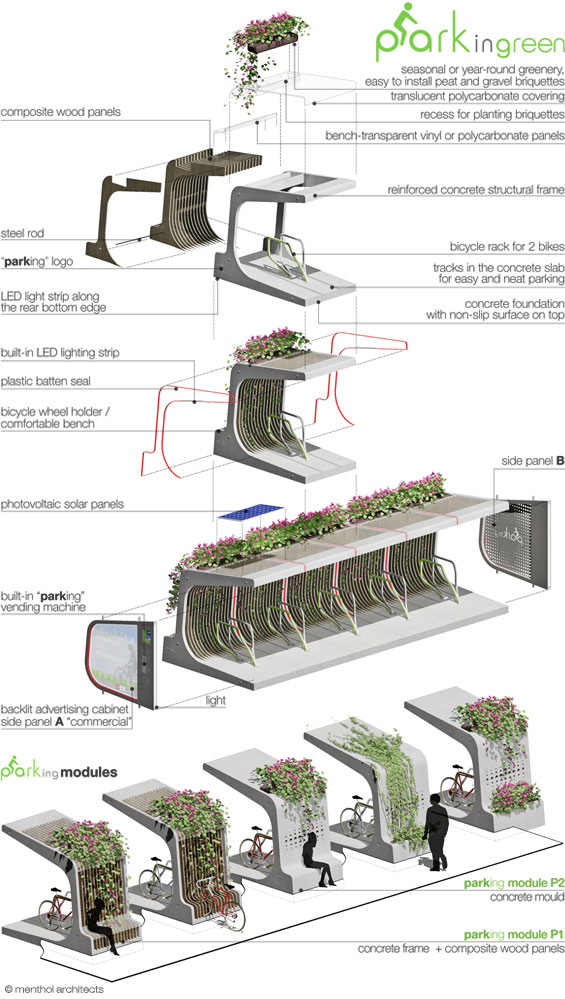In a city that is known as the premiere walking city, isn't it ironic that there is no place to SIT? The Softwalks seat is designed to attach to sidewalk sheds using a standard scaffold clamp.When not in use, it can be easily folded up and locked. SoftWalks
A unique and entirely new concept of combined tree grid and seating elements is multifunctional in the truest sense of the word. Seats, bicycle stands, and guardrails use surface grating without impeding the intended functions, giving the tree ample protection while people have more public space. ArchiTronic
The Tulpi-seat is designed to create more fun and color in our outdoor environments. The organic design of the chair is an ode to the tulip. Tulpi’s are high quality products: not only the exterior was a major focus point during the product development, we have also put a lot of work into the ergonomic features. A’Design Competition
The picnic table is an iconic model of LEMONT. It exists in 2 and 4 places. This set can be installed anywhere. It allows to store 2 or 4 bikes or to store his skis. Delivered disassembled, in 5 parts. Lemont




































